Wondering how to bake bread at home? Bread is one of the oldest foods of human creation, and there’s something special about cutting into a loaf of freshly baked bread, especially if you made it yourself. But how exactly do we bake bread?
People often think that baking your own bread at home is complicated, but actually it is fairly simple. All you need is a little know how!
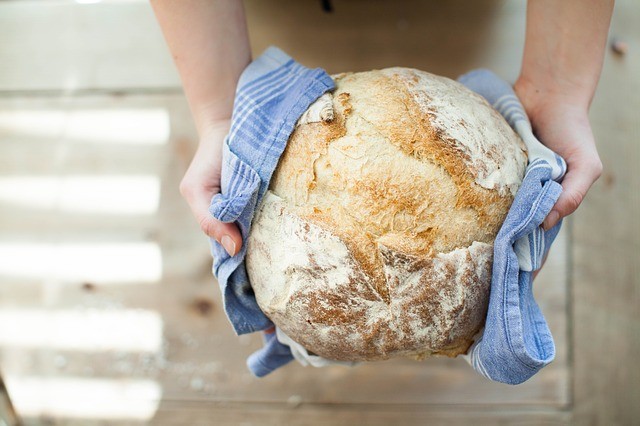
Bread is a culinary wonder that’s surprisingly easy to make with just a handful of simple ingredients. All it takes is some flour, water, a pinch of salt, and a raising agent like yeast. With these basic components and a little time, you can create a delicious and satisfying loaf of bread right in your own kitchen.
Whether you’re a seasoned baker or a beginner, the simplicity of bread-making makes it an accessible and rewarding culinary endeavor for all.
There are many different types of bread you can bake, but some of the easiest are flatbreads, which do not use any raising agents, soda breads and a basic white loaf.
How to Make Flat Breads
This sort of bread does not use any yeast or other raising agents, although you can add them if you want a more puffy texture. The basic ingredients are just flour, water and salt, and these can be combined with herbs, spices or nuts and seeds for your own unique flavour combinations.
Simple Flatbread Recipe
Ingredients:
- 250 grams of all purpose/plain flour
- 1 x teaspoon salt
- 1 x tablespoon oil such as olive or sunflower.
- A little water.
Method:
Mix the flour and salt together in a bowl, then add the oil. Begin to trickle the water in a little at a time, bringing it together to form a dough. Knead with your hands until it is smooth and pliable, if it feels too sticky, add a little more flour.
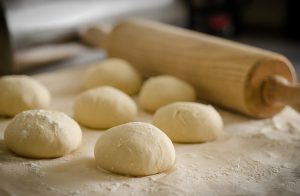
Leave the dough to rest for half an hour before dividing up into ball shapes with your hands.
Use plenty of flour to dust your work surface, as this will prevent the dough from sticking. Then roll out each ball to form a circular shape that’s about 3mm thick.

Heat a non-stick pan on the hob and dry fry each flatbread. They cook rather like pancakes, in that you will see brown spots forming that tell you that side is done. Flip the flatbread over and repeat on the other side.
Put cooked flatbreads on a warm plate and cover with a tea towel to keep them soft. As they cool, they become crispier – which is also delicious!
Tip! Why not add a sprinkle of ground coriander seed, cumin or sesame seeds to the flour before mixing to spice up your flatbreads?
How to Make Soda Bread
An Irish bread that has a dense cake-like texture. It uses baking soda as a raising agent, and also a form of acid such as lactic acid from yoghurt or buttermilk, or a vinegar. You can use any sort of flour to make soda bread. I prefer a coarse wholemeal for a great texture, or half wholemeal and half white to give a lighter colour.
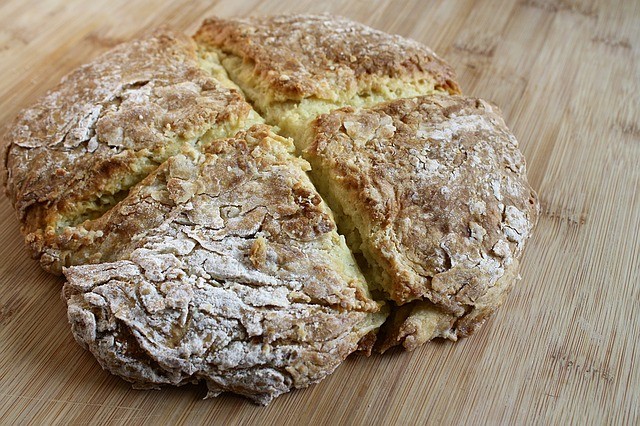
The joy of making soda bread is that there is no kneading and no waiting for the dough to prove. You just mix up the ingredients and bung it in the oven.
Basic Soda Bread Recipe
Ingredients:
- 400 grams of flour (or 200g wholemeal and 200g white)
- 1 teaspoon salt
- 1 teaspoon bicarbonate of soda
- 400 ml buttermilk
Method:
Preheat the oven to 190°C. Combine all the dry ingredients together in a bowl, then stir in the buttermilk until you have a soft dough that is slightly sticky. Form it into a round loaf shape and put in on a baking tray lined with greaseproof paper.
Bake in the oven for about an hour, although it could be ready sooner. To check if it is cooked, look for a golden colour and tap the bottom of the loaf to hear a hollow sound. Serve warm with butter and honey, or use to soak up a hearty soup.
Tip! Add a few rolled oats for an extra grainy loaf of soda bread!
How to make a basic Bread Loaf
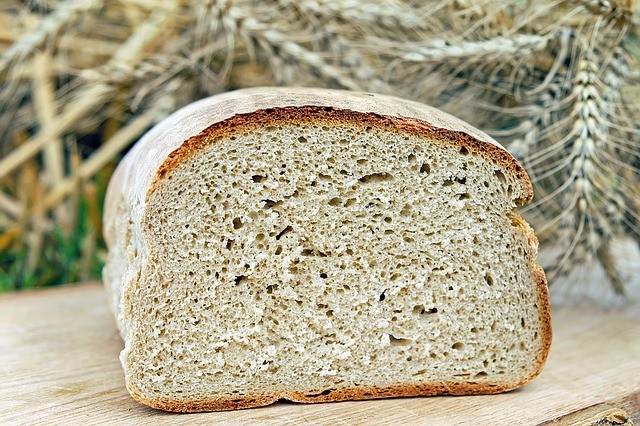
This is bread that uses yeast, and this is the key ingredient to help your dough to rise. It works by fermentation, reacting to the sugar in the flour to create bubbles of carbon dioxide, giving bread its open texture. Yeast is cheap to buy and available in supermarkets and other food stores. You can also buy bread making yeast on Amazon.
When making a loaf, bread flour will give you the most reliable results. This flour has a higher gluten content than normal flour, and it is gluten that gives bread elasticity. You can also use all-purpose flour or wholemeal flour, but getting the results you want might take a bit more practise.
The principles of bread making are: mixing ingredients together, kneading, leaving to rise (also called proving), shaping, leaving to rise once more, and baking.
Basic Bread Loaf Recipe
Ingredients:
- 500 grams or strong bread flour
- 300 ml of warm water
- 7g, or 2 teaspoons, of fast action dry yeast
- 1 tablespoon olive oil
- 1 teaspoon of salt
Method:
Mix the flour and yeast together in a bowl, then add the salt.
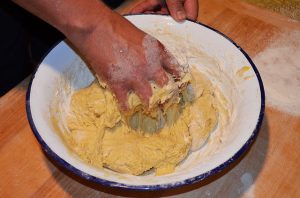
Add the olive oil and slowly pour in the water a little at a time, stirring with a wooden spoon and then use your hands to form a dough.
Tip the dough out onto a floured surface and knead, working the dough so that it becomes smooth. It will take 10 minutes of kneading to create good elasticity.
Now the dough needs to rest so the yeast can work its magic. Put the dough into a clean bowl, cover and leave to rise. After about an hour, the dough will have doubled in size.

Tip it back onto your floured surface, and form into the desired shape. The dough must then be left to prove again for about 30 minutes. Preheat your oven to 190°C.
Pop your shaped dough into the oven. You could make a sandwich loaf using a lightly greased loaf tin, or smaller loaves or rolls, but you would have to adjust the cooking times for smaller sized breads.
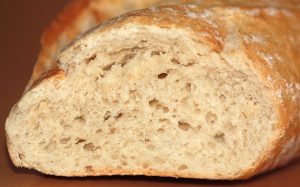
A loaf could take 30 minutes or more to bake. The easiest way is know when it is done is to keep an eye on your bread while it is baking, looking for that golden colour and testing the base for a hollow sound when tapped.
Bread can easily be cooked in an oven, but there are advantages to having a bread maker. Bread making machines take the labour out of the process of baking bread. There is less mess to clean up, and you can get on with other things and let the bread maker do all the work. Baking bread manually is much more fun though… If you want to know more about bread-makers, see our Top Breadmakers post!
Do you bake bread at home? Please share your tips and ingredients here!
